UV Radiation and Plants
The ultraviolet (UV) spectrum, which is part of the spectrum of the sun’s radiation, is not only important for plants because of its higher energy level, which can disrupt plant metabilosm cycles. The effects of UV light are also used by plants in the communication with animals that can percieve light signals in the UV range. UV signals by plants may serve to attract or repel insects and birds. Here, it is not only the pattern of absorption and reflection of UV light that serve as cues, but also the contrast of the affected plant part with the natural surroundings.
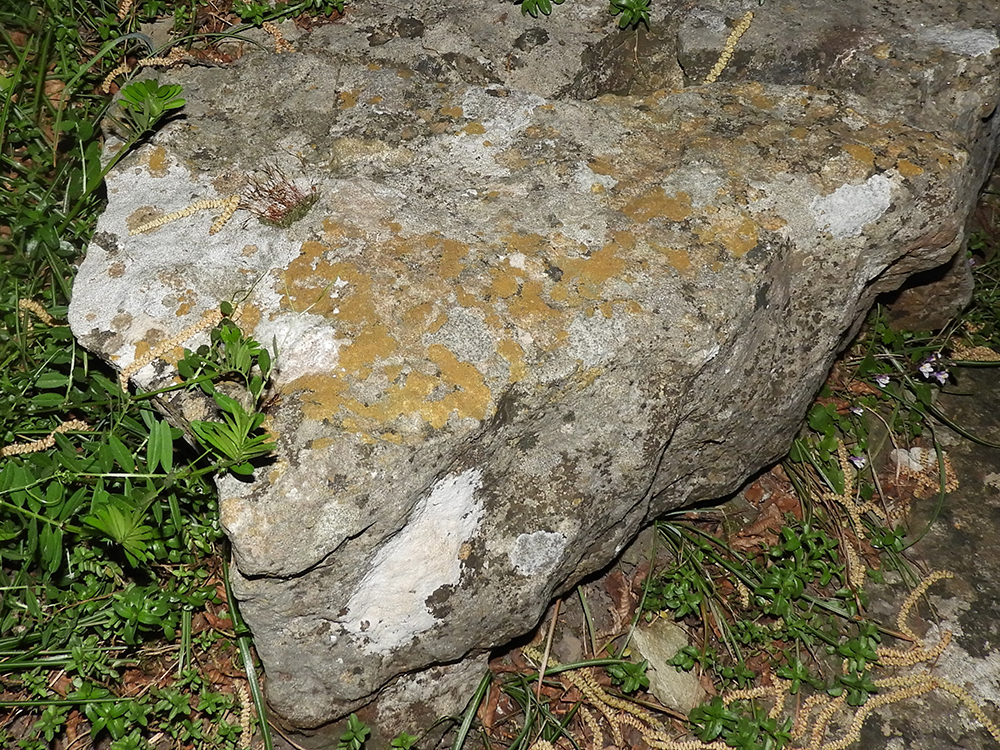
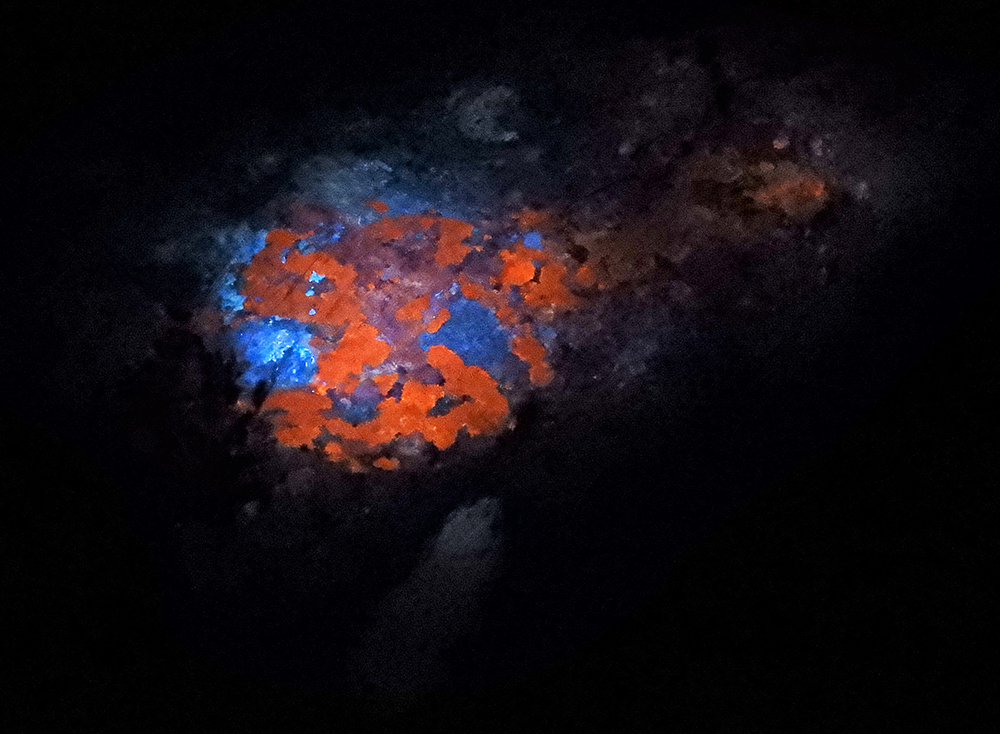
Ultraviolet light makes up about 7% of the sun irradiation and has a wavelength in the range of 200-400 nm. UV light is thus in the range preceding the visible light spectrum for humans.
Due to the filtering function of the atmosphere, only UV-A and UV-B radiation with wavelengths between 295-400 nm reaches the Earth’s surface; the shortest range of UV-B and the entire UV-C radiaiton range are absorbed in higher atmospheric levels.
UV radiation has a high energy content (Table 1) and can be utilized in full by plants during photosynthesis except for a small range of longer wave UV-A radiation.
Table 1: Light color show with the corresponding wavelength and energy content. The latter is based on one mol (6.023 x 10^23 particles) of photons.
Color Wavelength (nm) Energy content (kJ/mol)
UV-C 100–280 471
UV-B 280–320 399
UV-A („Black light“) 320–400 332
Violet 400–425 290
Blue 425–490 266
Green 490–550 230
Yellow 550–585 218
Orange 585–640 196
Red 640–700 184
Dark red 700–740 160
The high energy content of UV light also means that there may develop an energy surplus in the photosynthesis apparatus. This can lead to structural changes in cell organelles and in the worst case could lead to spontaneous chemical reactions. This can cause the formation of free radicals that can easily oxidize other substances. This process can ultimately lead to the death of the affected cell or the affected tissue.
Plants of deserts and semi-arid regions often form an especially thick waxy coating (cuticle) on their outermost layer (epidermis). This adaptation serves not only to prevent transpiration and dehydration, but the main cuticle component cutin also absorbs UV radiation, protecting the photosynthetically active cells that lie underneath the cuticle and epidermis. The formation of cutin is intensified with higher levels of UV radiation.
Trichomes, hairlike single or multi-cellular structures on the epidermis, are similarly multifunctional. They also reduce transpiration of water and simultanteously protect against intense light (and thus excess energy) by reflecting radiation. In addition, dew condenses on the fine hairs and falls to the ground, providing a personal water source for the plant. Montane plants are exposed to higher UV radiation due to the thin air at higher altitudes, meaning that they too utilize trichomes to protect against excess energy input.
In addition to the adaptations mentioned above, plants can also protect themselves by accumulating flavonoids, a certain pigment group, in their epidermis. These pigments absorb UV radiation, meaning that less ultraviolet light can penetrate to the photosynthetically active cells. The formation of these pigments is also stimulated by the presence of UV light. Another pigment group, the anthocyans, works as an antioxidant and neutralizes the free radicals created by excess light energy through chemical reactions.
Algae and lichens, which are exposed to higher levels of UV light due to their habitat, synthesize so-called Mycosporin-like amino acids (MAAs). These absorb UV radiation and release the excess energy as heat. Since part of the radiation on the wavelength range of 600 nm is reflected, lichens and UV-adapted algae appear orange under UV light.
Even plants that are less exposed to UV radiation in their habitats and therefore do not possess special structural protection against it can still effectively protect themselves from harmful UV radiation. There are a number of molecular mechanisms that can help protect against UV damage that can be found in all photosynthetically active organisms.
- In the so-called xanthophyll-cycle, pigments can be modified so that they take on UV-absorbing properties similar to flavonoids.
- With dynamic photo-inhibition, the quantum yield of photosystem II is greatly reduced and the surplus energy is then expelled as heat. This process is reversible and can be controlled by the organism.
- The state transition provides for better energy distribution within the photosynthesis apparatus by releasing the light collection antenna pigments from photosystem II and transferring them from the grana to the stromathylakoids so that they can be taken up in photosystem I.
- By breaking down the chlorophyll, a large portion of the radiation passes through the plant membrane without causing any photochemical reactions. This fast and reversible process can be easily observed in the green lily (Chlorophytum comosum). On bright sunny days, the plant becomes pale when exposed to direct sunlight, however, the plant recovers and becomes a lush green again in the evening!
- Where there is extremely high radiation, the light collection antenna complexes lie on top of each other. In doing so, the normal passing on of excitement energy, the so-called exciton transfer, cannot proceed unaffected, and the surplus energy is simply given off as heat.
Beside all of the negative effects of ultraviolet radiation, it also serves as a necessary signal for the normal development of plants. A gardener need not excessively protect their plants, but rather must gradually expose plants to UV radiation. The term photomorphogenesis describes the light-dependent development of an algae or plant. Depending on the light spectrum, sensor pigments become excited and set important processes like gene expression, growth stimulation and chlorophyll biosynthesis in motion. UV-A radiation plays an important role, which should be taken into consideration for plants raised in a greenhouse.
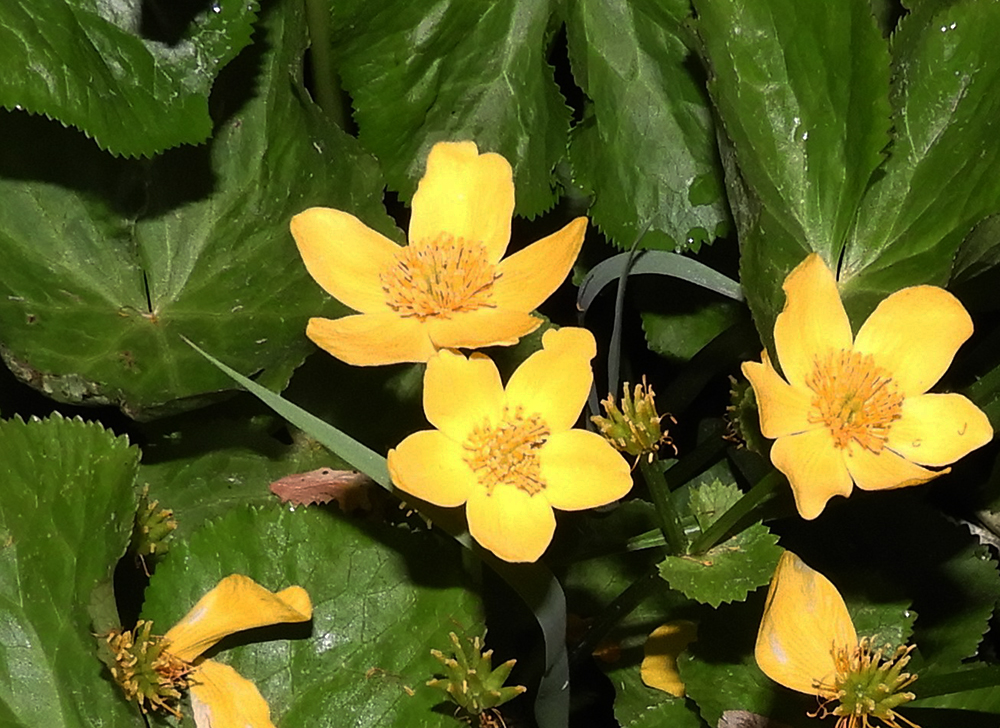
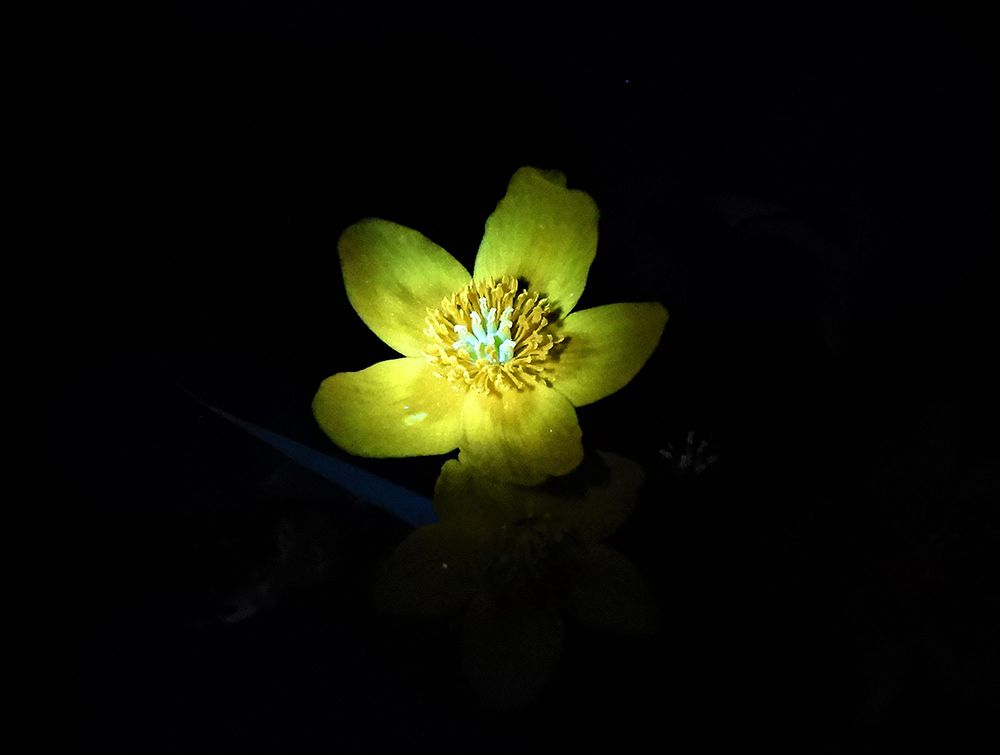
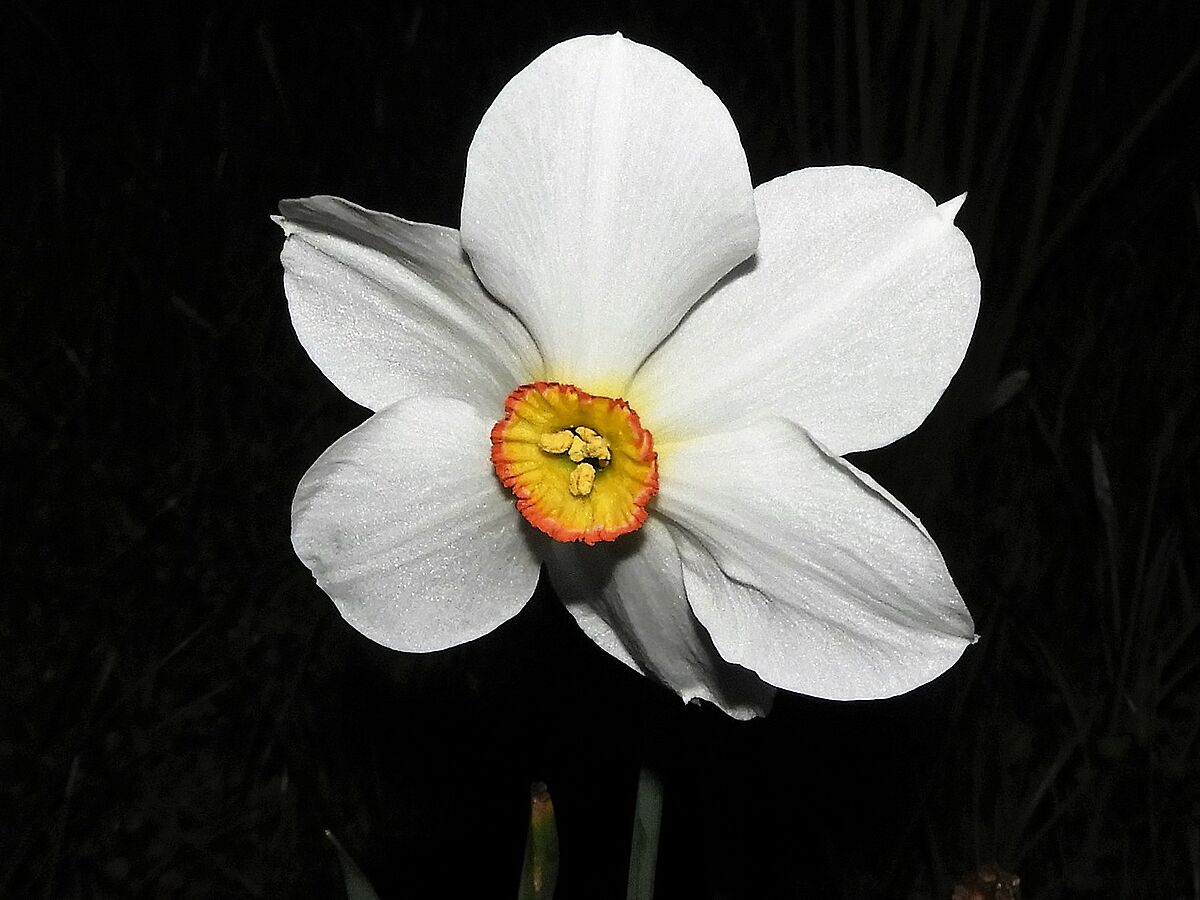
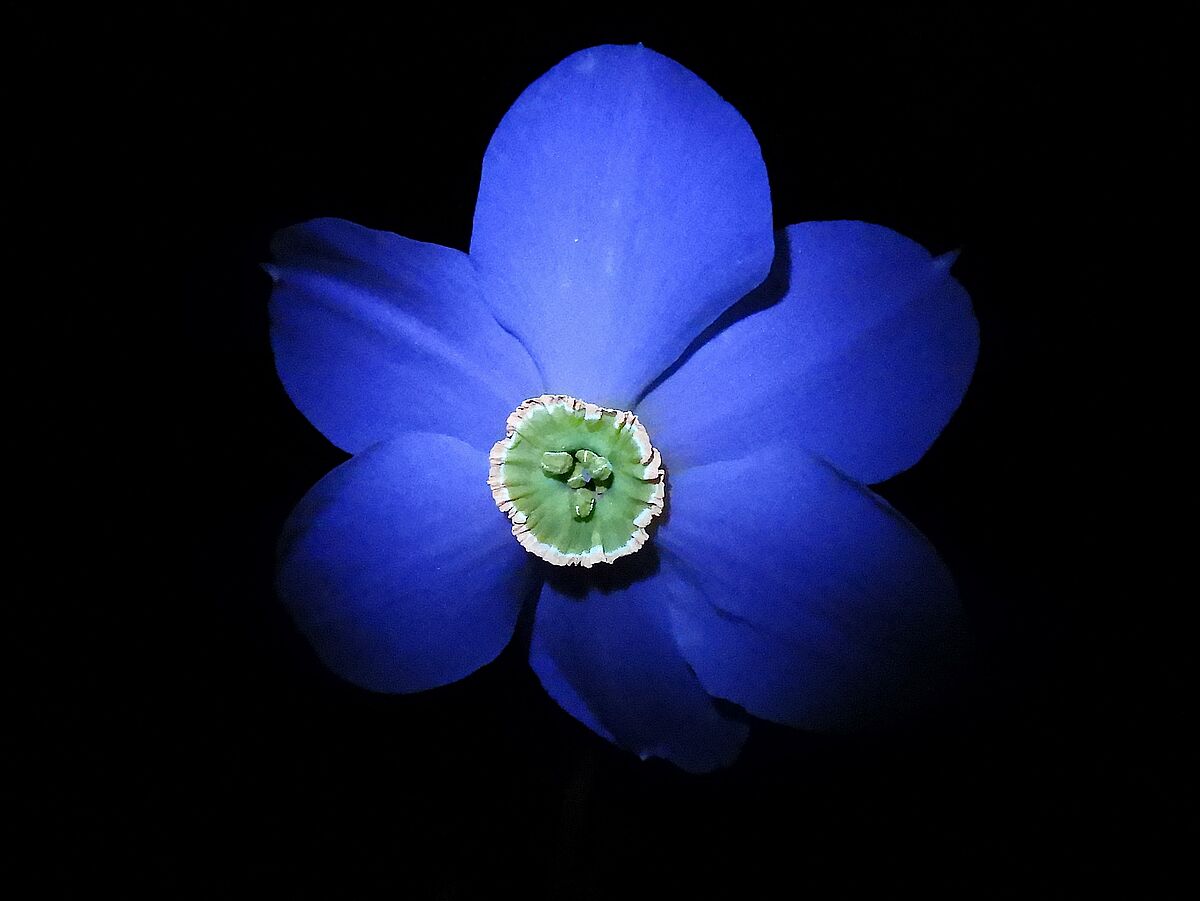
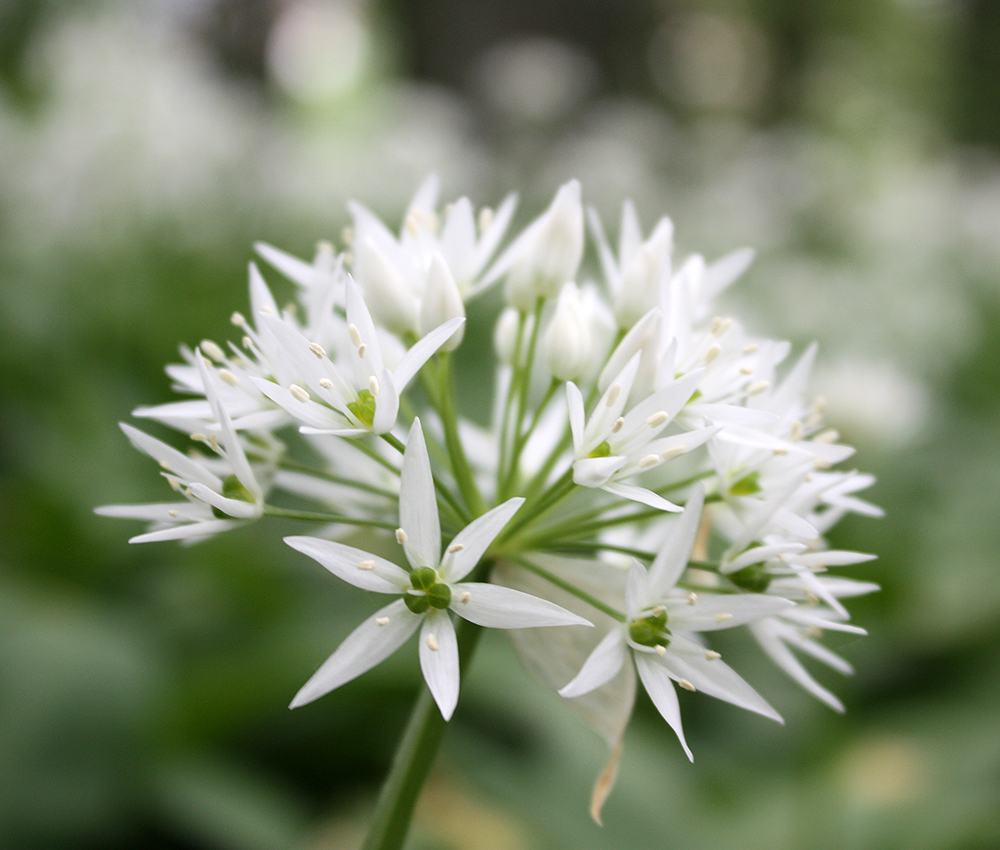
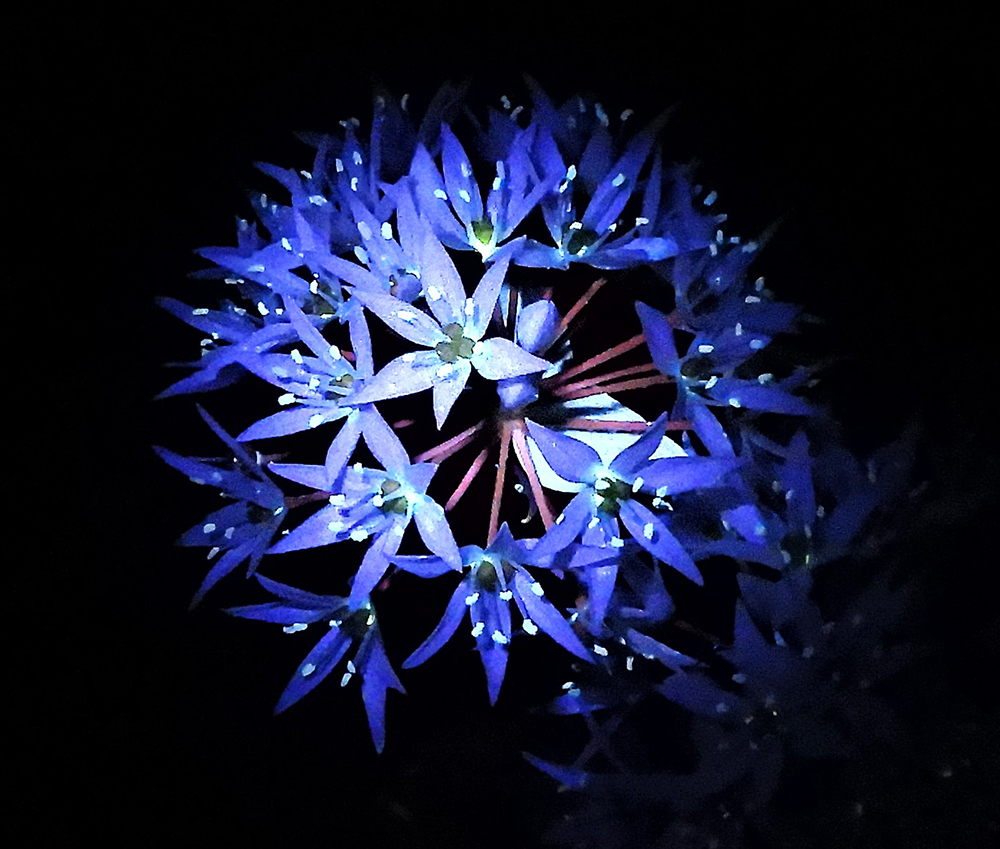
The collaboration of flowering plants and insects is one of the most well-known natural phenomena. Bees, bumble bees and butterflies are the most well-known pollinators. The cooperation of insects and plants needs to be efficient and effective for both parties. A bee cannot afford to visit numerous flowers without recieving a reward, because it requires too much energy. At the same time, a plant needs to be sure that its flowers can be easily seen and that a minimal amount of pollen from other plant species is deposited. A plant therefore needs to have an especially attractive flower so that pollinators prefer or exclusively visit their flowers. The color and pattern of a flower therefore serve as an advertisement that can be easily recognized. Just as humans recognize the logos of their favorite brands, bees can recognize the color and pattern of the best flowers.
Bees and bumble bees, like many other insects (especially Hymenoptera), have eye receptors for yellow, blue and ultraviolet light, meaning that these three colors provide the basis for insect vision (in humans this is red, green and blue). This means that bees and bumble bees do not have the ability to see red. Earth, rocks, sand and wood appear as a continuous surface to bees, as they only differ in color in their red spectrum. Red-orange flower colors therefore signal other insect groups as well as bird pollinators.
Insects can differentiate colors that only differ in wavelength by a few nanometers within their visible spectrum. Humans cannot detect such small differences in color. In addition to the patterns that we can see, there are also patterns that emerge from the absorbtion or reflection of UV light. The carotinoids (for humans yellow/orange) and the anthocyans (for humans red) reflect UV light, whereby the flavonoids (for humans yellow) absorb UV light.
Flowers that appear white to humans absorb UV light in most cases. Thus, the flower corolla of the snowdrop (Galanthus nivalis) appears dark in pure UV light, so that it stands out clearly from the UV-reflecting snow surface. Only very few flowers reflect all the colors that are perceptible to insects. Since insects, unlike humans, are not able to perceive colors and light-dark contrasts at the same time, but have to switch back and forth between the two perceptions, a flower that is only particularly bright because it reflects all light visible to insects is not particularly conspicuous because it lacks contrast or is not bright.
Flowers that also appear "white" to bees are not colored by dyes, but by structures such as air chambers between cells or starch grains in the cells of the epidermis. Light-dark contrasts, for example, are perceived by bees with the help of their green light receptor. They alternate between the perception of color and light-dark contrasts. Bees, in particular, are known to visit flowers that stand out clearly from the background in terms of both color and brightness. How "bee-white" flowers attract pollinators despite their unfavorable coloration has not yet been completely resolved.
In addition to the colors, which allow a clear differentiation from the background, there are patterns on flowers which simplify orientation to pollen and nectar. These patterns are called nectar guides. The most common nectar guide, found on the radially symmetric flowers of asters, daisies and some buttercup plants (e.g. fig buttercup Ficaria verna), is the so-called "ox-eye". The outer parts of the petals reflect UV light and the inner parts absorb it. The latter serves as a signal to the pollinator that there is nectar here. In experiments in which bees were offered artificial flowers with an inverted pattern, the bees tried to get nectar from the outer part of the petals, where UV light was absorbed in this experimental manpulation.
Flowers in the Phrymaceae family such as the common yellow monkeyflower (Mimulus guttatus) have completely different nectar guides. The lower petal contains UV-absorbing pigments, while the others contain reflective pigments.
With regard to the perception of color by insects, it should be taken into account that in daylight conditions, phenomena caused by pure UV light can be seen by insects in color through the wavelengths of the visible spectrum, whereby only darkness appears under pure UV-light conditions due to UV absorption. In contrast, areas that appear bright in pure UV light are supplemented subtractively by the color that the reflected UV in the insect's eye causes under full daylight conditions. Consequently, for the UV-seeing pollinator, a fundamentally different color impression is perceived.
The white flowers of the lily of the valley (Convallaria majalis) appear as dark as the leaves of the lily of the valley surrounding them in pure UV light, because flowers, much like leaves, almost completely absorb UV rays. As a result of the UV absorption, the flowers become indistinguishable from the surrounding foliage. For the pollinator, however, the flowers appear "bee-blue-green" and thus vividly colored due to the complete UV absorption.
In addition to attractive UV patterns, there are also deterrent ones. An example of this is the blossoms of the St. John's worts (e.g. Hypericum peltatum) and jasmine (Jasminum primulinum). They have patterns on the underside of their petals that deter potential pollinators from visiting. However, these patterns are only visible when the flower is closed, so for insects it is not worth visiting this flower. Other flowers change color signals after they have been pollinated and their nectar source has dried up (e.g. the horse chestnut Aesculus hippocastanum from yellow to red). Others use the UV absorption of the nectar to make its quantity visible to potential pollinators.
Another group of pigments that absorbs UV light, abbreviated as DIPs (dearomatized isoprenylated phloroglucinols), is found mainly in stamen, fertilized ovaries and buds. They may be used to deter herbivorous insects (e.g. Hypericum calycinum). Unlike many other pigments, DIPs are toxic to insects.
In contrast to insects and most mammals, which can only see three primary colors (trichromatic), many birds can see four primary colors (tetrachromatic). In addition to green, red and blue, they also perceive light in the long-wave UV range.
Blossoms pollinated by birds such as hummingbirds, sunbirds and honeyeaters do not have any noticeable nectar guides. They uniformly absorb ultraviolet light. The absence of the nectar guides reduces competition with pollinating insects, for which the flowers appear inconspicuous and unattractive. What looks like a service of the plant to the birds is also advantageous for the plant. The fewer different pollinators there are, the less likely it is that foreign pollen will get onto the stigma. Foreign pollen would often not be able to fertilize the flower and would be therefore useless for the plant.
Non-pollinating birds can also perceive UV light. The waxy layer of many fruits strongly reflects UV radiation. In this way, for example, plums can be easily recognized from a distance between the leaves.
As with white flowers, not all berries that appear white to humans are white for birds. The stone fruits of the common snowberry (Symphoricarpos albus) are actually white for birds, as they reflect all wavelengths visible for birds. The fruits of the mistletoe (Viscum), on the other hand, absorb ultraviolet light so that birds can perceive them as colored. Nearly black fruits such as blackberry (Rubus fruticosus agg.) do not reflect UV light. Although they are not very conspicuous due to their dark coloring, they can still be perceived by birds. This is due to its shiny surface, which looks like a tiny mirror.
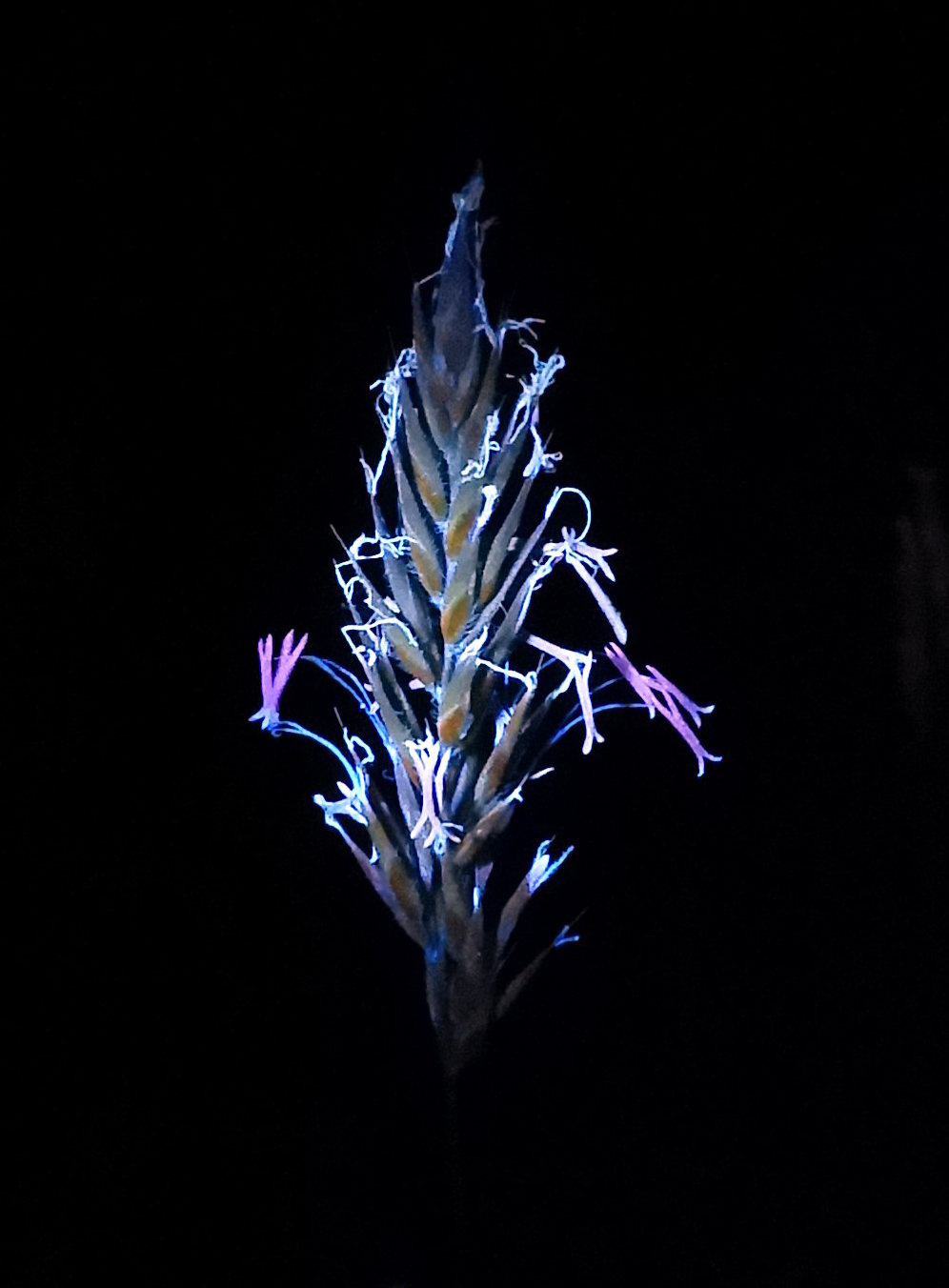
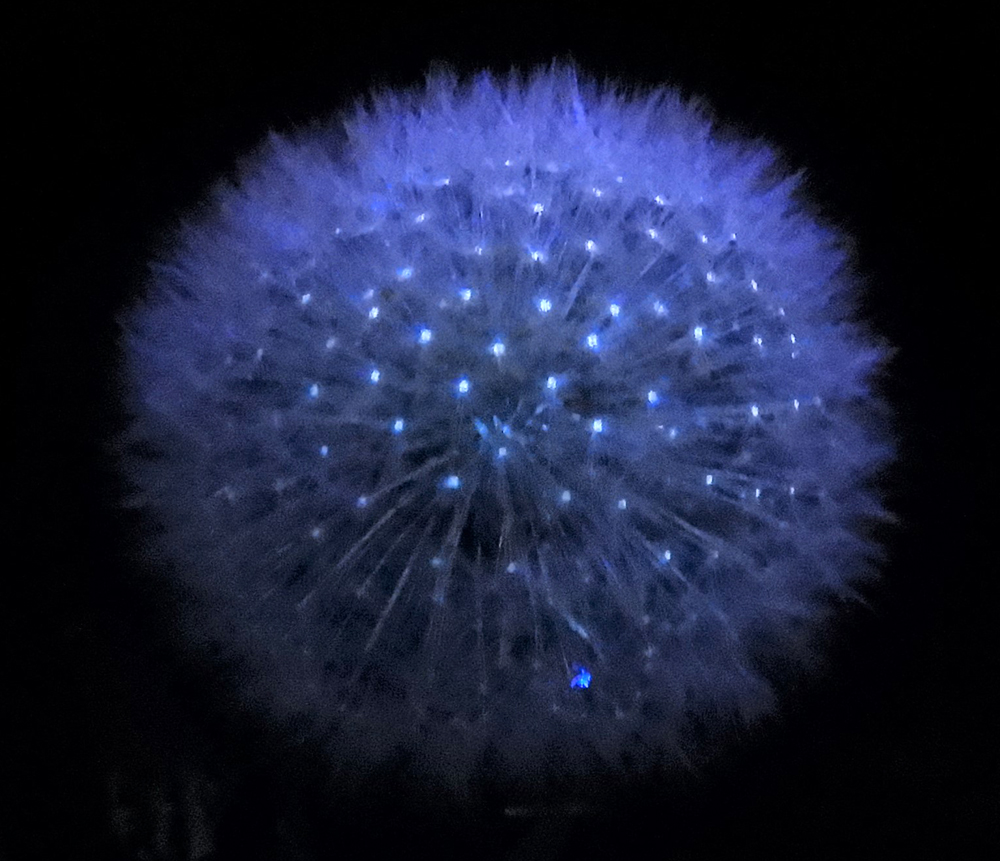
The UV-reflection and absorption by flowers has been shown to be important for the contrast effect of a flower against its natural optical background. The background usually consists of foliage, soil, rocks, sand, water, snow or the sky. Investigations on 832 Central European entomogamous plant species in their natural habitats in the Eifel region showed that in pure UV light, 57% of the investigated species flowers contrasted against UV-absorbent backgrounds, and 85% contrasted with UV-reflective backgrounds. This means that UV absorption of the flower organs is more frequent than reflection. UV absorption can be seen as a more effective protection against damage caused by UV radiation than reflection, as the particularly sensitive reproductive organs always absorb UV in a flower.
UV absorption prevailed in all biotope types studied. Forest plants showed an interesting trend: A large portion of the species that contrasted with the background consisted of early blooming plants such as pilewort (Ficaria verna), lungwort (Pulmonaria officinalis), wood anemone (Anemone nemorosa) and oxlip (Primula elatior). Contrast can also be achieved through very strong UV absorption, which is higher than that of the surrounding environment. The white flowers of the wood anemone appear black in pure UV light, which distinguishes them from the moderately UV-reflective background of their own foliage leaves. The species that flower later in the vegetation period, such as may lily (Maianthemum bifolium), lily of the valley (Convallaria majalis), Soloman's seal (Polygonatum sp.) and violet species (Viola sp.), on the other hand, were "UV-neutral" in that they showed an almost complete UV-reflection, which corresponded to that of the surrounding foliage, and thus did not contrast with it. As an interpretation, an adaptation to the seasonally changing light conditions should be considered: During the flowering season of the spring geophytes, UV light can still reach the forest soil almost unimpaired and can be used effectively for contrasting the flowers. This effect is then lost when UV light is then almost completely shielded by the leaves of the trees in late spring.
This interpretation is supported by observed "UV-neutral" properties of the blossoms of wind-pollinated (anemogamous) grasses and trees, which do not require the services of color-seeing insects. When flowers of aquatic plants are blooming, it is often possible to observe UV-reflecting stamens (anthers), which are in a bloom that otherwise absorbs UV light. As the water surface forms a highly reflective background for these flowers, it is advantageous if the flowers reflect little or no UV light. Stamens serve as guides for the pollinators.
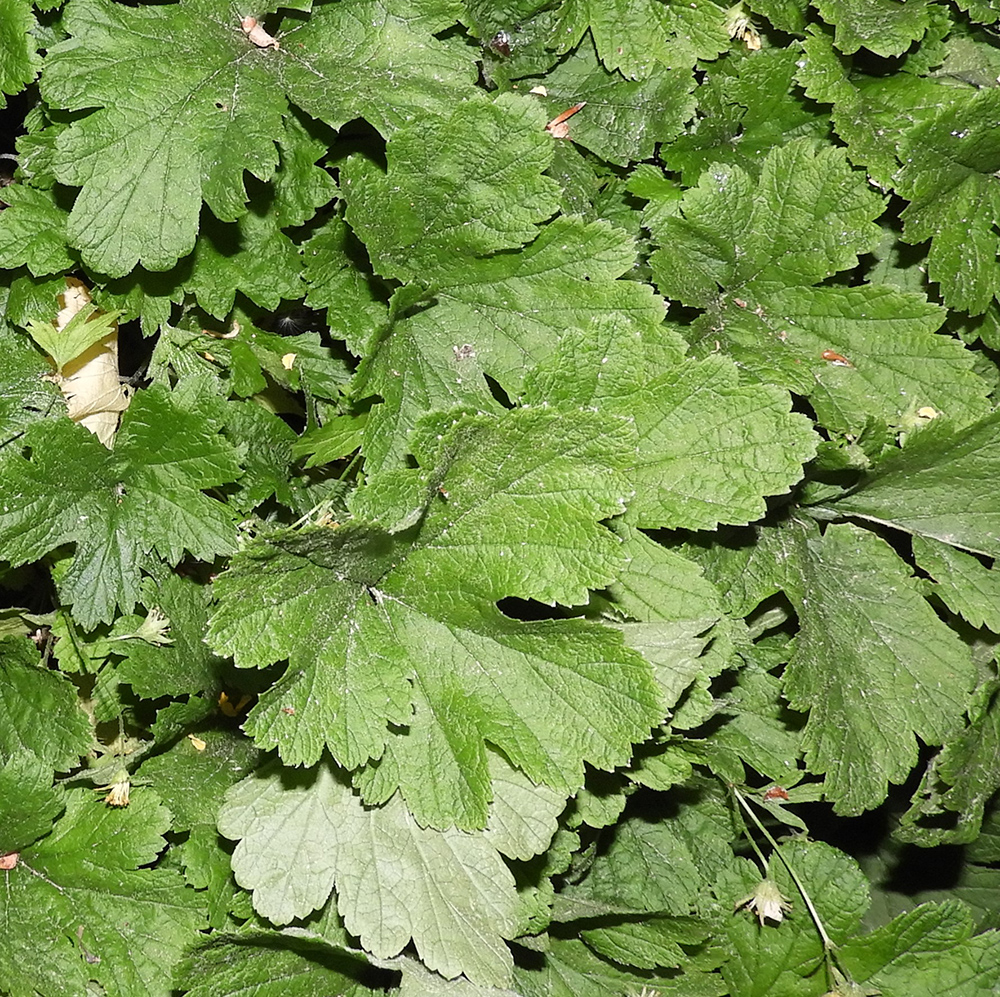
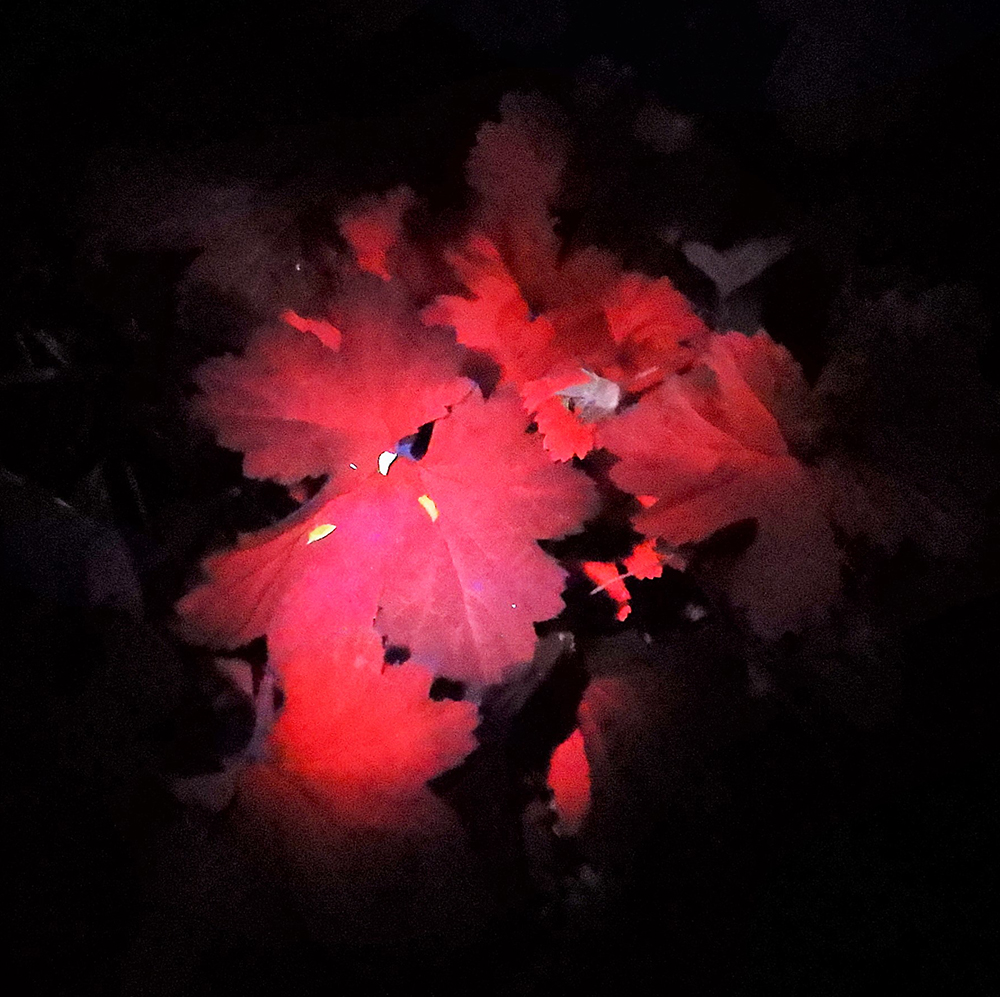
The fact that we see plants as so colorful and bright is due to a wide variety of pigments. However, pigments do not only have the property of absorbing or reflecting certain wavelengths of light, which makes them colorful for us, but also possess different chemical properties.
The best-known and quantitatively most influential group is chlorophylls. They ensure the green color of sprouts and leaves, and they are the most important pigments involved in photosynthesis. In the case of chlorophyll, light is absorbed in the blue-violet and orange-red areas. Since light translates to energy, the chlorophyll molecule changes chemically with light input. An electron is raised to a higher energy level than naturally present in the molecule. One can imagine the electron as a heavy ball, which is rolled up a slope. The person who moves this sphere needs energy for that. From experience, we know that the ball does not remain in its raised position by itself. You have to hold onto it and use up energy.
Such energy is not available to the electron in our chlorophyll molecule. So it "falls" back to its original state after an extremely short period of time. This releases energy. With our analogy, if you let the ball roll down the slope towards another ball, this second ball is pushed away by the impact. The energy used to move the ball up the slope becomes free. The released energy of the electron in the chlorophyll excites another electron in another chlorophyll molecule. This domino effect allows the light energy, which falls on many chlorophyll molecules, to be bundled and used for chemical reactions.
However, if high-energy light in the blue-violet and UV range hits a chlorophyll molecule, the released energy becomes visible to us as fluorescence. While reflected light has the same wavelength as the light that previously hit the reflecting surface, emitted light has a greater wavelength than the initial light. Chlorophyll emits red light with a wavelength of 668 nm.
Anthocyanins are a very attractive pigment group to humans. For example, they give cherries, blueberries, plums and red wine the typical reddish to bluish color, depending on the pH of the cell sap. These pigments have already been mentioned above as radical inhibitors. Anthocyanins also absorb ultraviolet light and fluoresce both red and blue.
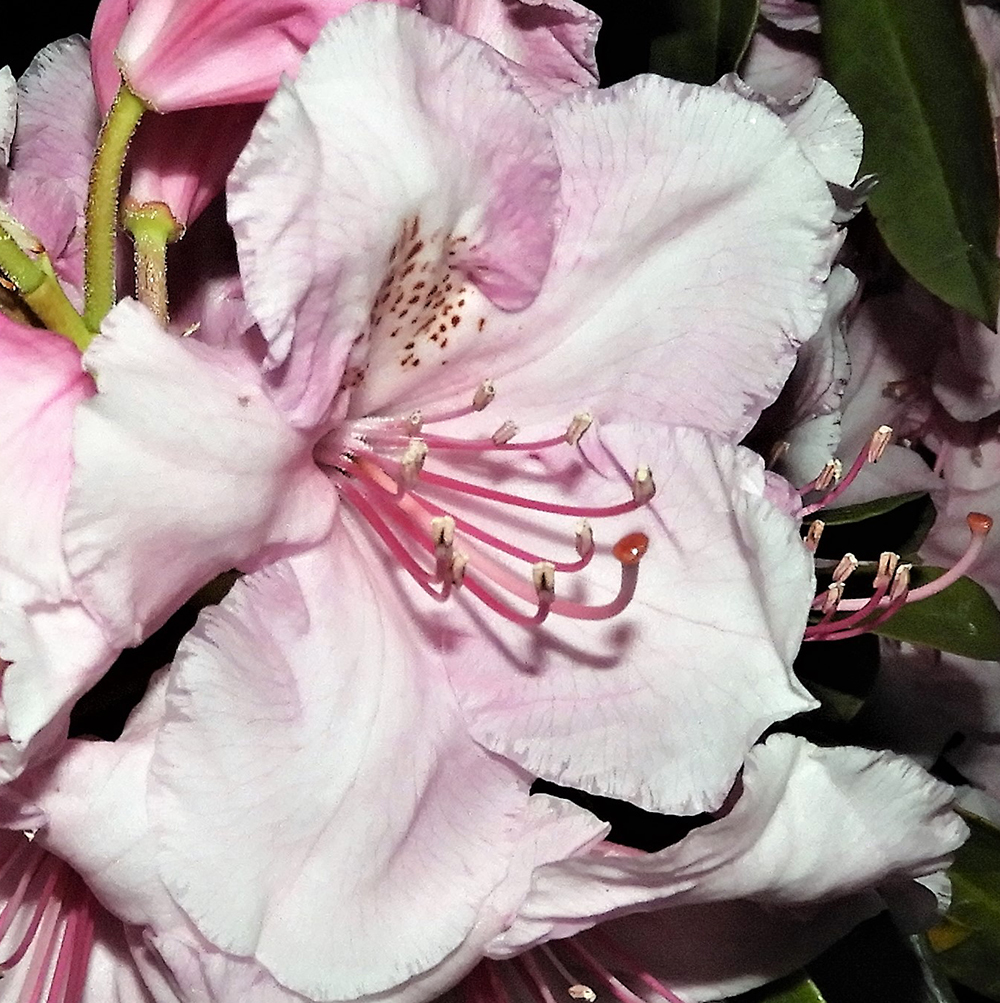
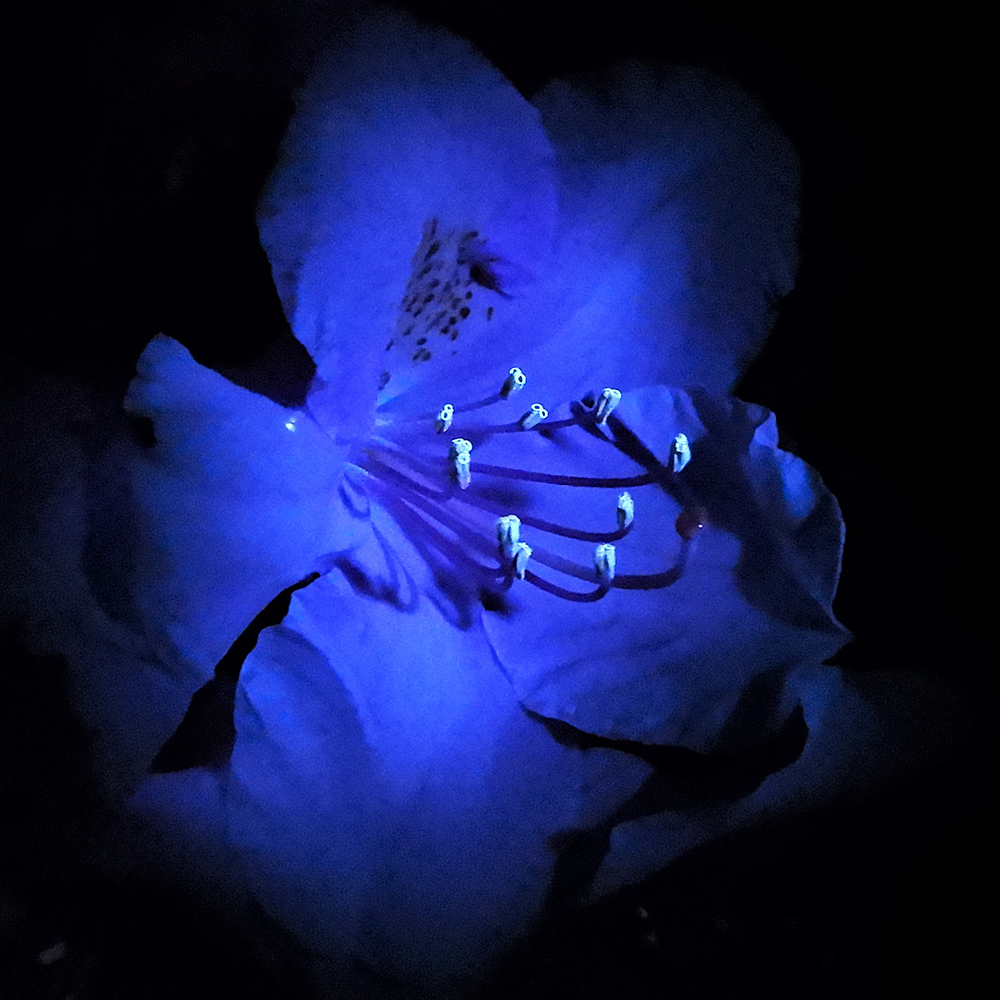
Photographs of numerous plant flowers under UV conditions by Bjørn Rørslett on www.naturfotograf.com/UV_flowers_list.html.
Baby, S., Johnson, A. J., Govindan, B., Lukose, S., Gopakumar, B. & Koshy, K. C., 2013: UV induced visual cues in grasses. Scientific Reports 3: 2783, DOI 10.1038/srep02738.
Basra, A. (ed.), 1997: Mechanisms of environmental stress resistance in plants. Harwood, Amsterdam, 407 pp.
Burkhardt, D., 1982: Birds, berry and UV: A note on some consequences on UV vision in birds. Die Naturwissenschaften 69(4): 153–157.
Gronquist, M., Bezzerides, A., Attygalle, A., Meinwald, J., Eisner, M. & Eisner, T., 2001: Attractive and defensive functions of the ultraviolet pigments of a flower (Hypericum calycinum). PNAS 98(24): 13745–13750.
Hess, D., 1991: Die Blüte. 2. Aufl., Ulmer, Stuttgart, 458 pp.
Kevan, P., Giurfa, M. & Chittka, L., 1996: Why are there so many and so few white flowers? Trends in Plant Science Perspectives 1(8): 280–284.
Langanger, M., Jokl, S. & Mussob, M., 2000: UV reflectance in flowers of Nymphaea alba L. and Nuphar lutea (L.) Sm. (Nymphaeaceae). Aquatic Botany 67: 13–21.
Larcher, W., 2003: Physiological plant ecology: Ecophysiology and stress physiology of functional groups. 4th ed. Springer, Berlin Heidelberg, 513 pp. (Translation of Larcher, W., 2001: Ökophysiologie der Pflanzen. 6. Aufl., Ulmer, Stuttgart.)
McDonald, M. S., 2003: Photobiology of higher plants. Wiley, Chichester, 368 pp.
Papiorek, S., Junker, R. R. et al., 2016: Bees, birds and yellow flowers: pollinator-dependent convergent evolution of UV patterns. Plant Biology 18: 46–55.
Rae, J. M. & Vamosi, J. C., 2013: Ultraviolet reflectance mediates pollinator visitation in Mimulus guttatus. Plant Species Biology 28: 177–184.
Rosen, D. & Barthlott, W., 1991: Ökologische Aspekte der Ultraviolett-Reflexion von Blumen in Mitteleuropa, besonders der Eifel. Decheniana 144: 72–112.
Schlangen, K., Miosic, S. et al., 2009: Formation of UV-honey guides in Rudbeckia hirta. Phytochemistry 70: 889–898.
Shabala, S. (ed.), 2012: Plant stress physiology. CAB International, Wallingford Oxfordshire, 318 pp.
Van der Kooi, C. J., Pen, I., Staal, M., Stavenga, D. G. & Elzenga, J. T. M., 2016: Competition for pollinators and intra-communal spectral dissimilarity of flowers. Plant Biology 18: 56–62.
Yoshioka, Y., Horisaki, A., Kobayashi, K., Syafaruddin, Niikura, S., Ninomiya, S. & Ohsawa, R., 2005: Intraspecific variation in the ultraviolet colour proportion of flowers in Brassica rapa L. Plant Breeding 124: 551–556.
Text: Annika Wellner, Vivien Hotter, Dr. Dethardt Goetze

